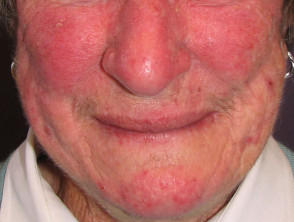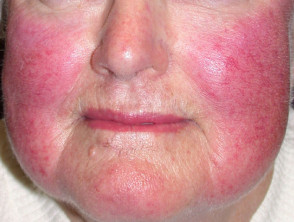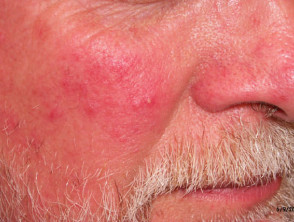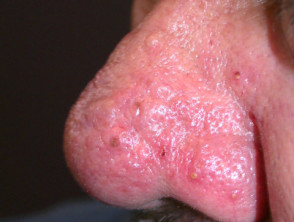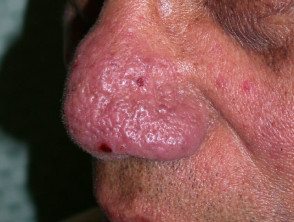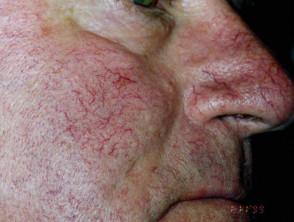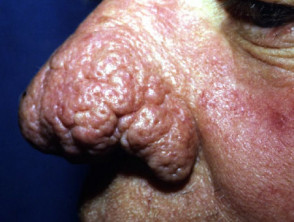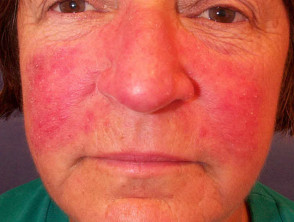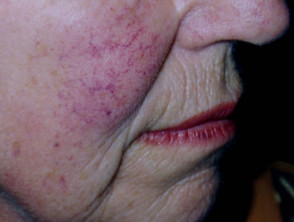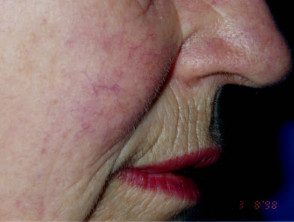DermNet provides Google Translate, a free machine translation service. Note that this may not provide an exact translation in all languages
Home Follicular disorders Rosacea CME
Follicular disorders
Rosacea
Created 2009.
Learning objectives
- Recognise and manage rosacea
Introduction
Rosacea is a common transient, recurrent or persistent facial rash of unknown cause. It affects the cheeks, nose, chin and forehead of those in their 30s or older, especially those with fair-skin, blue eyes and of Celtic origin.
Clinical features
Rosacea is characterized by mid-facial erythema, asymptomatic dome-shaped inflammatory papules and superficial pustules. The fleshy part of the nose may slowly enlarge with prominent pores and fibrous thickening (rhinophyma). Persistent swelling may also affect cheeks, earlobes, forehead and eyelids.
Rosacea
Unlike acne vulgaris, there are no comedones, cysts, or nodules.
Rosacea is often accompanied by:
- Flushing
- Telangiectasia
- Blepharitis or meibomianitis (erythematous papules on eyelid margins)
- Facial oedema
- “Sensitive” skin i.e. face creams sting and burn
- Seborrhoeic dermatitis
- Irritant dermatitis
Symptoms are often aggravated by:
- Sun exposure
- Hot and spicy food or drink
- Rapid change in environmental temperature
- Topical steroids
Treatment
- Reduce facial flushing: avoid extremes of temperature, minimize exposure to hot or spicy foods and alcohol, protect from sun exposure;
- Avoid oil-based facial creams -use water-based make-up and sunscreen;
- Oral anti-inflammatory antibiotics such as tetracycline 250-500 mg, doxycycline 100mg or minocycline 100mg daily for 4-8 weeks. Repeat as necessary;
- Topical metronidazole cream or gel or azelaic acid cream or lotion can be used intermittently or long term alone for mild cases and in combination with oral antibiotics for more severe cases;
- Vascular laser treatment of telangiectasia;
- Surgical correction of rhinophyma (using laser, electrosurgery or conventional scalpel).
Rosacea
Activity
What medications may be used to control flushing?
Related information
References:
On DermNet NZ:
Information for patients
Other websites:
Books about skin diseases:
See the DermNet NZ bookstore
Sign up to the newsletter
© 2024 DermNet.
DermNet does not provide an online consultation service. If you have any concerns with your skin or its treatment, see a dermatologist for advice.
